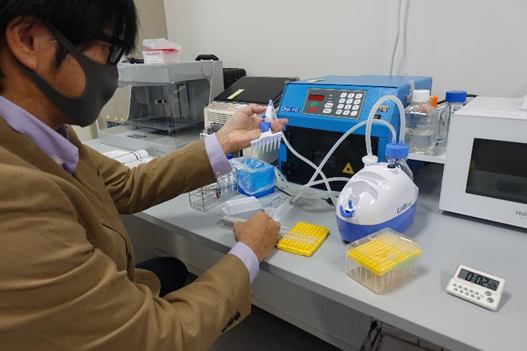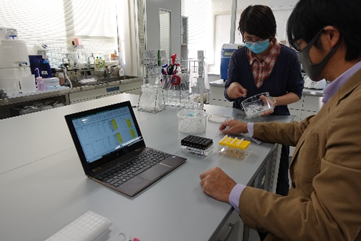On 3-6th November 2020, as a part of the SATREPS MACH project, Dr. Nagai from the National Research Institute of Fisheries Science visited the Environmental Genomics and Ecology Laboratory of Hiroshima University.

The purpose of his visit was to quickly detect possible algicidal bacteria and utilize the information for algae bloom regression. To do so, we aimed to examine bloom samples for bacterial DNA amplification, purification, and DNA sequencing of sample bacteria by a NGS (next generation sequencer) within 15 hours.
In this experiment, the time required for the whole process to test 18 samples was 10 hours, successfully achieving the 15 hours goal. The time can likely be further shortened once we optimize the procedure.
One of the SATREPS-MACH project goals is to perform holobiome analysis to understand the bacterial influence on algae blooms’ environmental dynamics. Rapid microbial analysis of seawater samples is an essential technique to achieve this goal. The procedure we used in this experiment showed that the method is valuable for performing real-time holobiome detection and beneficial for other researchers who are intensively looking for a bacterial relationship with harmful algae blooms.
More progress on the MACH project can be expected with this rapid bacterial detection methodology. We thank Hiroshima University for making the best arrangement for us to use the facilities under the pandemic situation.
